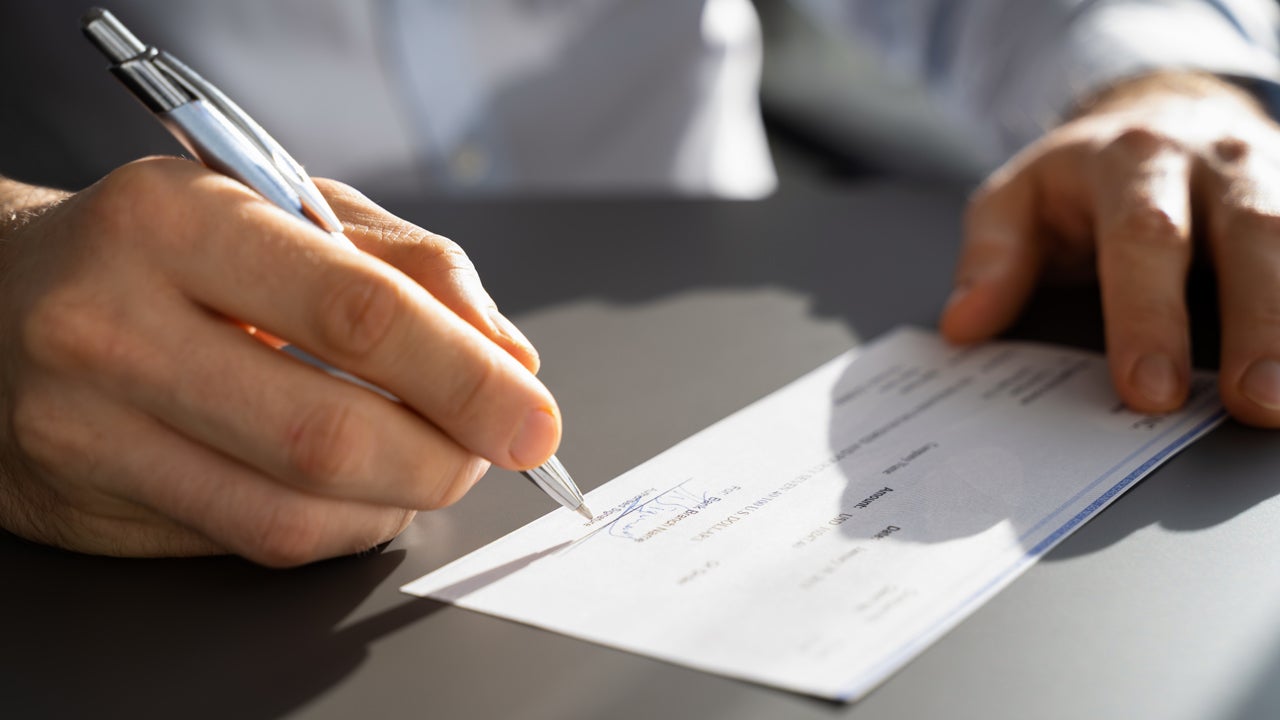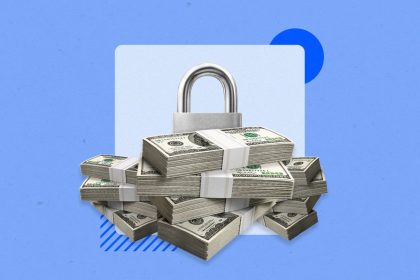Key takeaways
- Writing a check requires accuracy. Fill out all fields clearly to avoid payment delays or processing issues
- Include essential information on the check, including the date, payee name, amount in numbers and words, memo and your signature.
- Always write in blue or black pen and double-check details before submitting. Track check numbers and amounts to maintain accurate financial records.
These days, it’s easy to swipe a card or send money electronically. But checks remain essential in many situations. Whether you’re paying rent, sending a gift or handling a bill, knowing how to write a check properly can save you from headaches down the road. Make a mistake, and you might face delays, late fees or even bounced check charges.
Before you fill out your next check, use this simple step-by-step guide to ensure you get it right the first time.
Oddphoto/Getty Images; illustration by Bankrate
How to fill out a check
Before writing a check, you’ll need to have a checking account with sufficient funds to cover the amount of the check. Then, follow these steps to fill one out.
1. Date the check
Write the current date on the line at the top right-hand corner. This tells the financial institution and recipient when you wrote the check. You can write the date in long form or use numbers — either “1/11/2025” or “Jan. 11, 2025” works fine.
Pro tip: Be careful with postdated checks (writing a future date). Some banks will process them immediately, regardless of the date you write.
Learn more with our guide on how to keep your check from bouncing.
2. Write the name of the payee
On the line that says “Pay to the order of,” write the full name of the individual or company you’re paying. This person or entity is called the payee. Use their complete, legal name rather than a nickname to avoid confusion.
If you don’t know the exact name, you can write “cash,” but be aware that anyone can cash or deposit a check made out to cash. This makes it less secure than writing a specific name.
3. Write the check amount in numeric form
In the small box to the right of the payee line, write the numerical dollar amount clearly. For example, if you’re writing a check for one hundred dollars and thirty cents, write “$100.30.”
Make sure your handwriting is legible — unclear numbers can cause your bank to reject the payment or process the wrong amount.
4. Write the check amount in words
On the line below “Pay to the order of,” spell out the dollar amount in words. This amount must match the numerical amount exactly. Write the cents as a fraction over 100.
Examples:
- $100.30 becomes “One hundred and 30/100”
- $50.00 becomes “Fifty and 00/100”
- $1,250.75 becomes “One thousand two hundred fifty and 75/100”
Even if you’re writing a check for a round dollar amount, include “00/100” for the cents portion to prevent alterations.
5. Write a memo
The memo line is optional, but it’s smart to use it. This section serves as a reminder of the check’s purpose and can help with your recordkeeping. For example, you could write “Rent – January 2025” or “Wedding Gift”.
Some companies request specific information in the memo line, such as your account number or invoice number. This helps ensure your payment gets applied correctly.
6. Sign the check
Sign your name clearly on the line at the bottom right corner of the check. Use the same signature that’s on file with your bank — mismatched signatures can cause processing delays.
Your signature authorizes the bank to pay the stated amount to the payee. Without it, the check is invalid.
Additional tips for writing a check
Follow these best practices to ensure your checks process smoothly and securely:
-
Use the right tools: Always write with a blue or black pen, never pencil. Pencil marks can be erased and altered, making your check vulnerable to fraud.
-
Write legibly: Clear handwriting prevents confusion and processing errors. If your writing is hard to read, consider printing in block letters.
-
Double-check everything: Review all information before you sign. Check that the numerical amount matches the written amount and that you’ve spelled the payee’s name correctly.
-
Fill in all spaces: Draw lines through any blank spaces to prevent someone from adding information later. For example, if you write “Fifty and 00/100,” draw a line after “100” to fill the remaining space.
-
Keep detailed records: Write down check numbers, amounts, payees and dates in your check register or use a tracking app. This helps you balance your checkbook and provides a paper trail for tax purposes.
-
Store checks securely: Keep unused checks in a safe place, and never leave them in your car or other unsecured locations.
How to balance your checkbook
Balancing your checkbook means keeping track of your spending and ensuring it matches your bank records. This practice helps you avoid overdraft fees and catch errors early.
To stay on top of your checking account balance, write down checks, deposits, ATM withdrawals and debit card purchases in your budget or a budgeting app as soon as they happen.
When your statement arrives, check your records against the bank’s records. Look for discrepancies like missed transactions, bank fees or processing errors. Subtract any checks you’ve written that haven’t cleared yet, and add any deposits that haven’t been processed to get your true available balance.
For a detailed guide on maintaining accurate records, check out our article on why you should balance your checking account.
FAQs about checks
Can I write a check to myself?
Yes, you can write a check to yourself to transfer money between accounts or to get cash. Write your own name on the “Pay to the order of” line, then you can deposit it into another account or cash it at your bank. Just make sure you have sufficient funds in the account you’re drawing from.
What is a postdated check?
A postdated check has a future date written on it, typically used when you want the recipient to wait before cashing it. However, banks aren’t required to honor the date — they may process the check immediately if presented. If you need to delay payment, consider using online bill pay or setting up automatic payments instead.
How do I void a check if I make a mistake?
If you make an error while writing a check, write “VOID” in large letters across the front, making sure it covers the signature line and amount fields. Keep the voided check for your records, and start over with a new check. Never try to correct mistakes with white-out or cross-outs, as this can make the check look altered and cause banks to reject it.
Next steps: Ready to open a checking account or switch to one with better features? Compare Bankrate’s best checking accounts to find the right fit for your needs.
Read the full article here
















